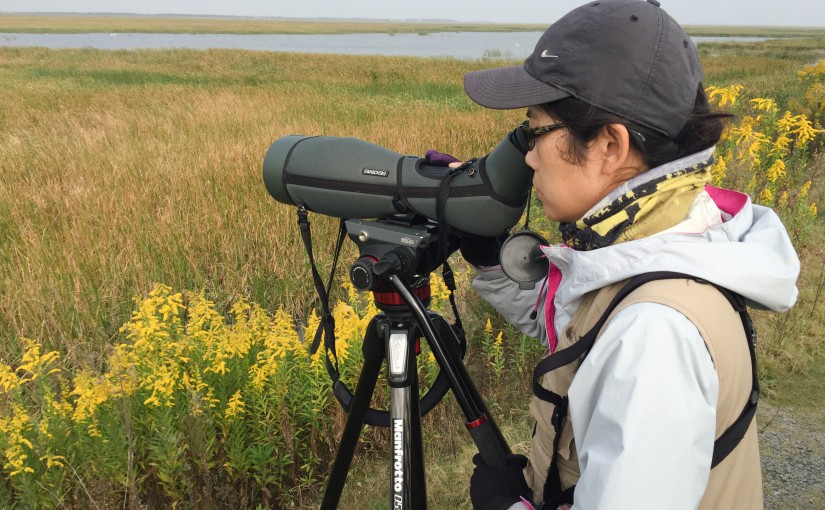by Craig Brelsford
Founder, shanghaibirding.com
Highlights from our 72-species day at Hengsha, Sun. 25 Oct.: a lone Black-faced Spoonbill associating with 2 Eurasian Spoonbill, Chinese Grey Shrike, Red-throated Thrush, 2 Common Starling among White-cheeked Starling, and Bull-headed Shrike dining on grasshopper. Ducks: Eastern Spot-billed Duck 270, Eurasian Teal 55, Northern Shoveler 3. Also Eurasian Coot 280, Common Snipe 28, Ruddy Turnstone 1, Chinese Penduline Tit 75, Richard’s Pipit 25.
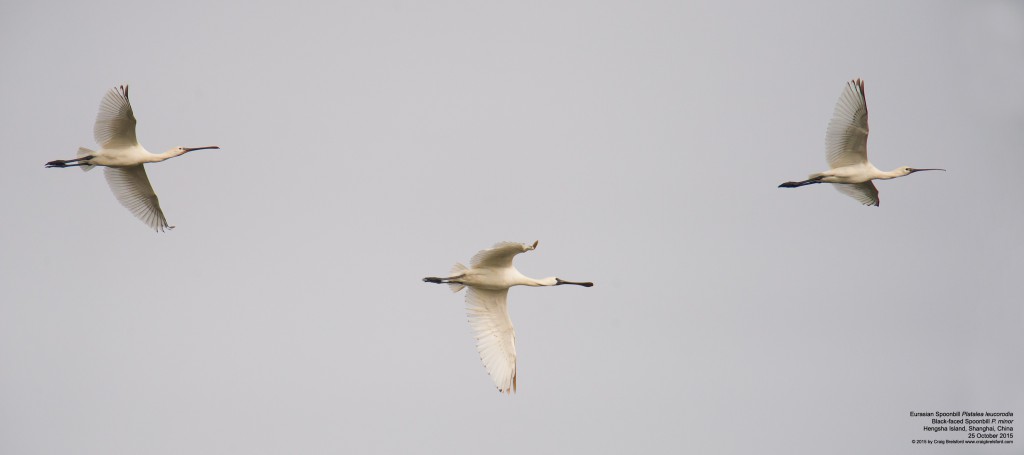
Elaine and I recorded only 1 bunting all day: a single Chestnut-eared Bunting. Hengsha was bunting central last autumn, and almost exactly a year ago Elaine and I had seven Emberiza species in a single morning on Temple Mount on Lesser Yangshan.
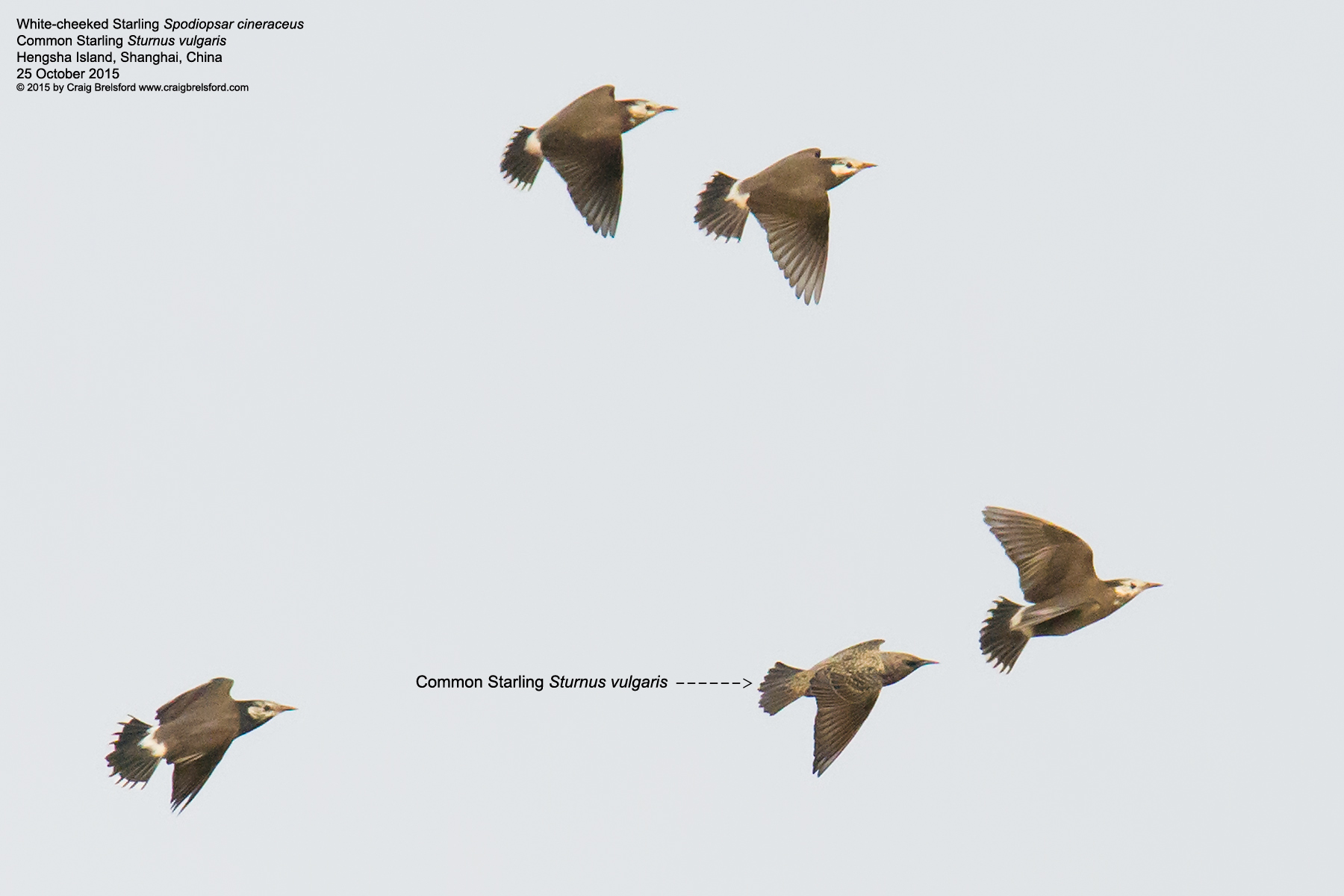
In the past year, Elaine and I have seen Common Starling with White-cheeked Starling on three occasions in three widely separated locations. On 8 Nov. 2014 at Sì Hé Cūn (四合村) near Lake Poyang in Jiangxi, we found 80 Common Starling among 160 White-cheeked Starling; on 23 July 2015 at Wūlánnuò’ěr (乌兰诺尔) near Hulun Lake in Hulunbeier, Inner Mongolia, we found 1 Common Starling among 15 White-cheeked Starling; and now this latest sighting. Common Starling is well-known to birders in Europe and North America (where it is an introduced species), and it is common in parts of western China, but in eastern China it is supposedly only a vagrant.
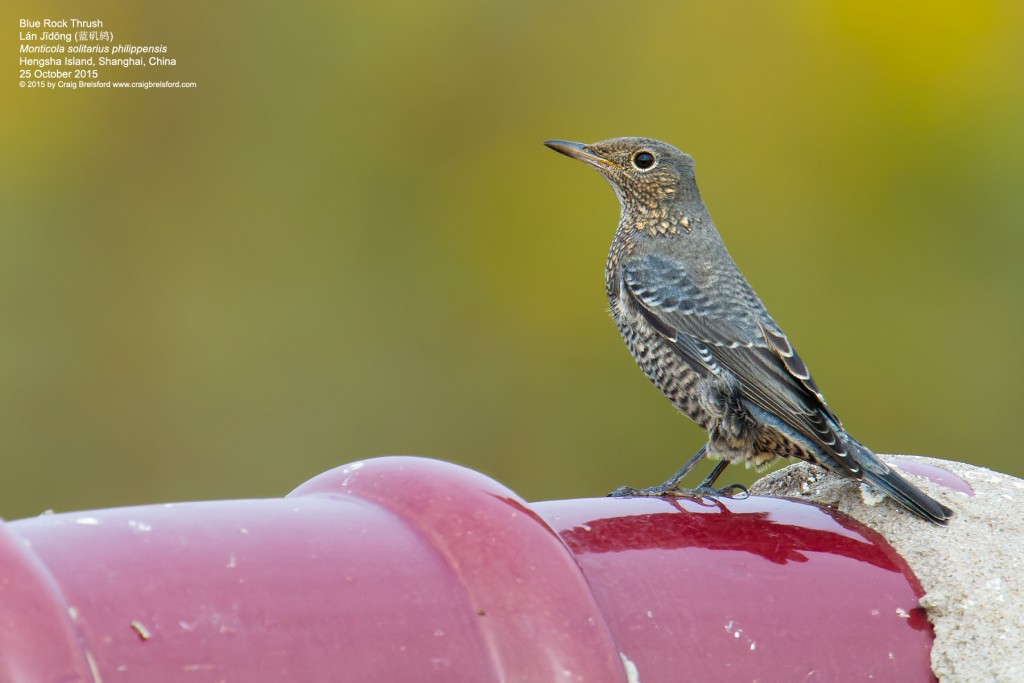
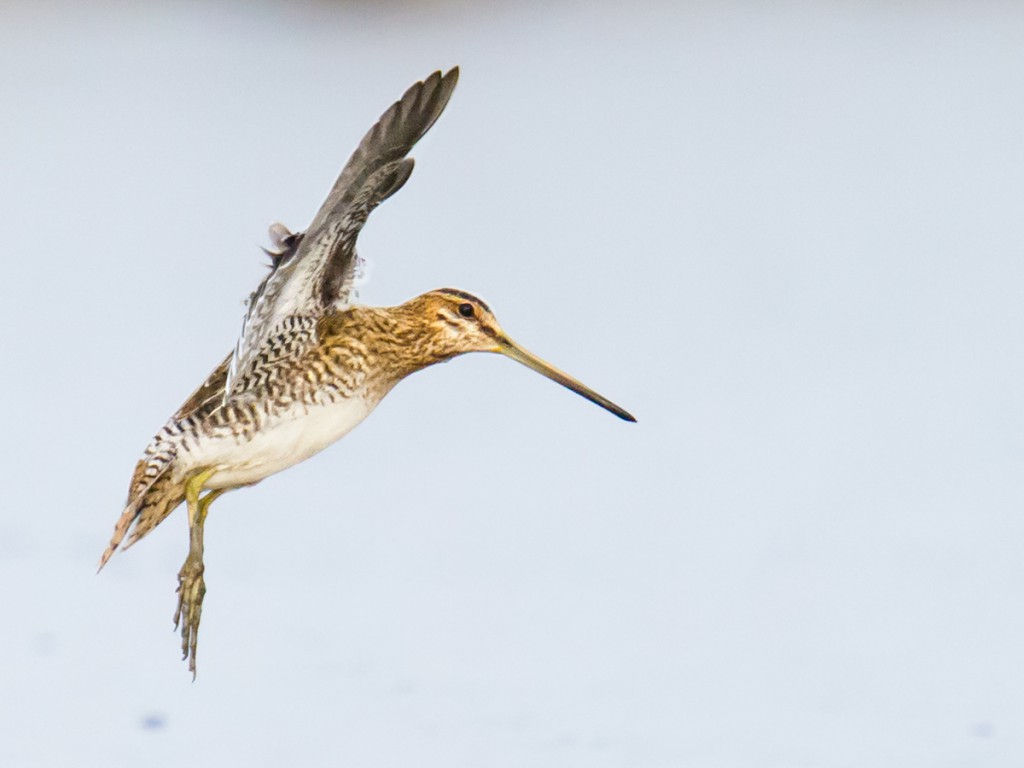
Hengsha is complicated to get to, and the reclaimed land where birders go lacks trees and thus forest birds. If it had even the microforests of Nanhui, then our total of 72 species might have been 80 to 90, and if in addition even a small part of the giant project were run as a nature reserve, then the list might have topped 100! Still, a day at Hengsha may be the single most interesting birding day available in Shanghai. The place has a remote, even wild feel, and the air is fresh.
Featured image: Elaine Du viewing birds on Hengsha Island. In the top-left corner of the image, the three white dots are 1 Black-faced Spoonbill Platalea minor associating with 2 Eurasian Spoonbill P. leucorodia.

